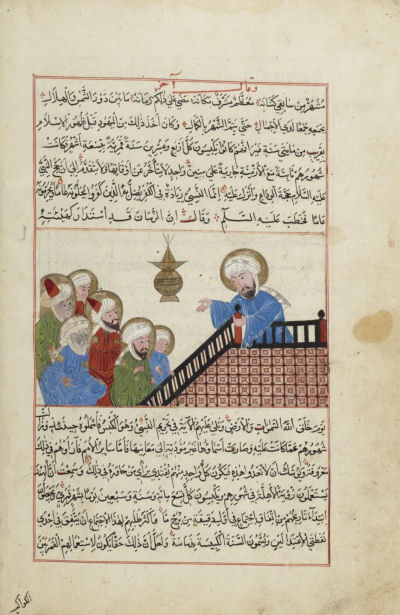

Until 10 AH (631/632 CE) the Arabian lunar year, as it was observed in Mecca, was kept in approximate alignment with the seasons by adding an intercalary month every two or three years. During Muḥammad’s “Farewell Pilgrimage” this practice was abolished (Qurʾān, sūra 9:36-37) causing the Islamic year to slowly cycle through the seasons.
This fact is often glossed over in Islamic studies and many Western calendrical dates found in the literature, referring to the life of Muḥammad and early Islam, were computed by assuming a lunar calendar which followed the same rules as the current Islamic calendar.
For this reason, Western calendar dates commonly cited for key events in early Islam such as the hijra, the Battle of Badr, the Battle of Uḥud and the Battle of the Trench, should be viewed with caution as they can be in error by one, two or even three lunar months.
Many sources erroneously claim that the first day of the hijra, when Muḥammad and a small number of his companions secretly left Mecca, and after a journey of about two weeks arrived in Yathrib (later to be known as Madinat al-Nabī [“The City of the Prophet”], Medina in English), occurred on 1 Muḥarram, 1 AH. However, the date of the hijra is not mentioned in the Qurʾān or in other early Islamic texts. Later traditions, such as mentioned in the hadith (collections of sayings and actions of the prophet and his companions), early biographies of Muḥammad and Islamic astronomical/chronological tables suggest that the first day of the hijra fell on the first day of the month Rabīʿ al-Awwal and that Muḥammad and his companions arrived at the outskirts of Yathrib on the 12th day of the same month, and after resting for a few days, entered Yathrib on the 16th day.
Converted to the Julian calendar, and taking into account the number of intercalary months (probably three) which were inserted between the hijra and the last pilgrimage of Muḥammad (10 AH), the first day of the hijra probably occurred on Thursday, 17 June (622 CE), and Muḥammad’s arrival at the outskirts of Yathrib probably occurred on Monday, 28 June (622 CE). Muḥammad’s entry into Yathrib probably occurred on Friday, 2 July (622 CE).
However, as the adopted intercalation scheme before 10 AH is uncertain, all proposed reconstructions of the Arabian and the Islamic calendar before the abolition of the intercalary months can only be regarded as hypothetical.